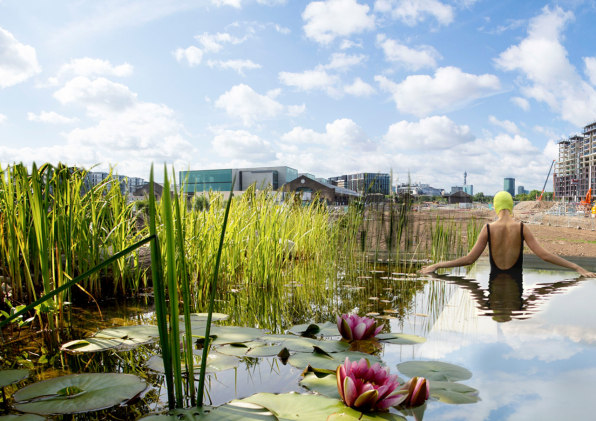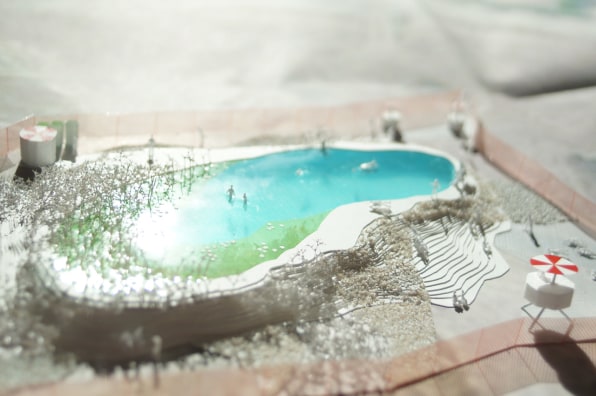How To Clean A Really Dirty Inground Pool
Most swimming pools are doused in chlorine as a disinfectant, despite the fact that the chemical can react with other things commonly found in pools–like pee and skin cells–to create byproducts linked to asthma and cancer. A new temporary pool in London takes a different approach by cleaning the water with plants instead.
In a "regeneration zone," plants like pondweed and water lily absorb nitrates and ammonium and release oxygen, while microorganisms reduce algae and germs. Another section of the pool uses a gravel bed to host another layer of microorganisms for more cleaning. Throughout the day, pumps push the water from the swimming area through the filters.

The self-cleaning pool, which opened on April 1, was built as part of an art project on a site that's slated for development. For the artists, it was a way to interact with a changing neighborhood–a new building will be constructed next to the pool as people swim–and also a way to literally immerse visitors in nature and help people think about the connection between their own health and the health of the environment.
"Visitors enter a living laboratory where they are aware of their relationship with nature, and about consequences of their interaction's with nature and take responsibilities, they thus become actors," say the designers, Slovenia-based artist Marjetica Potrč, and Dutch architects Eva Pfannes and Sylvain Hartenberg. "The water is important for the engagement of the actors. . . . They become aware of various natural processes by swimming in the pond."

Since the plants can only clean a certain amount of water each day, there's a daily limit to the number of people allowed to swim (though this makes the dangerous assumption that everyone is at the same dirtiness levels). Still, the design could be adapted to replace some regular outdoor pools.
"You just need more space," the artists say. "The capacity of the pools are always calibrated to the volume and the plant filters and plant regeneration areas."
The pool will be up for as long as two years before it's taken down, and then the area will be turned into a park. It's one more example of a trend to make more-natural pools, like the East River's floating +Pool in New York, which could open as soon as this summer, a similar project in London, or a new pool for a polluted canal in Berlin. None of these ideas, however, helps people who want to swim in the winter in cold climates. But they're all ways to help clean polluted water while giving swimmers at least a temporary reprieve from chlorine.
How To Clean A Really Dirty Inground Pool
Source: https://www.fastcompany.com/3044621/this-natural-pool-cleans-itself-with-plants-not-chlorine
Posted by: porteryouss1994.blogspot.com

0 Response to "How To Clean A Really Dirty Inground Pool"
Post a Comment